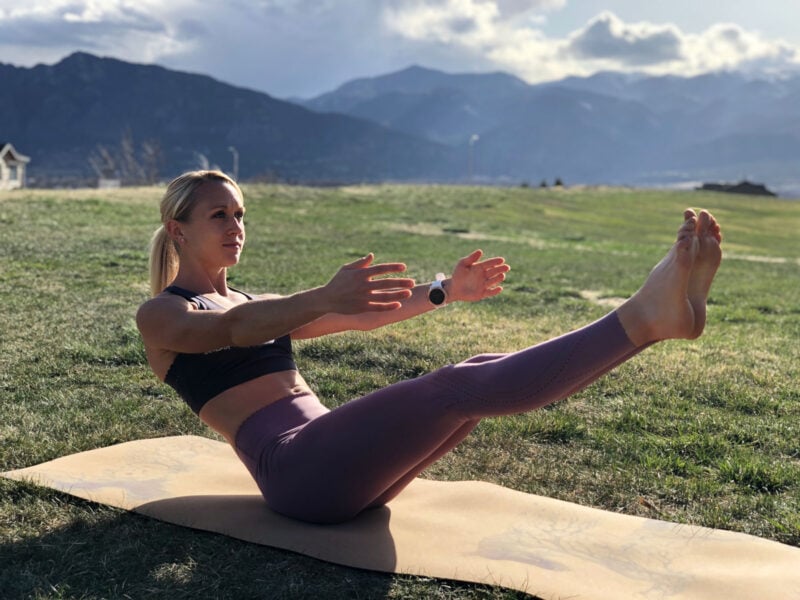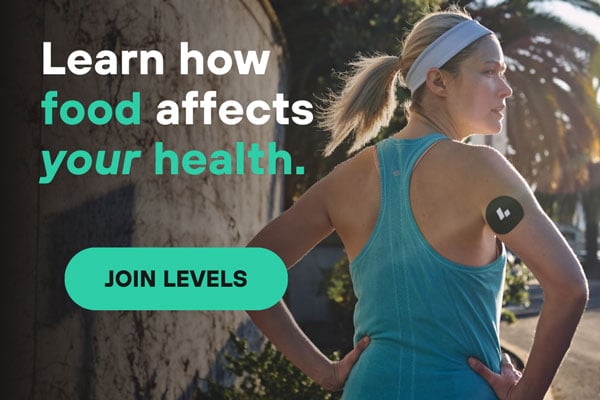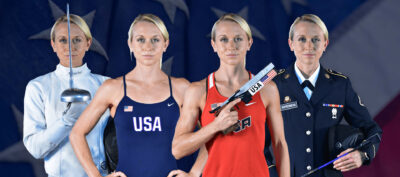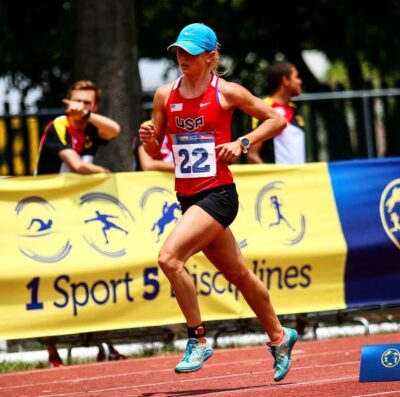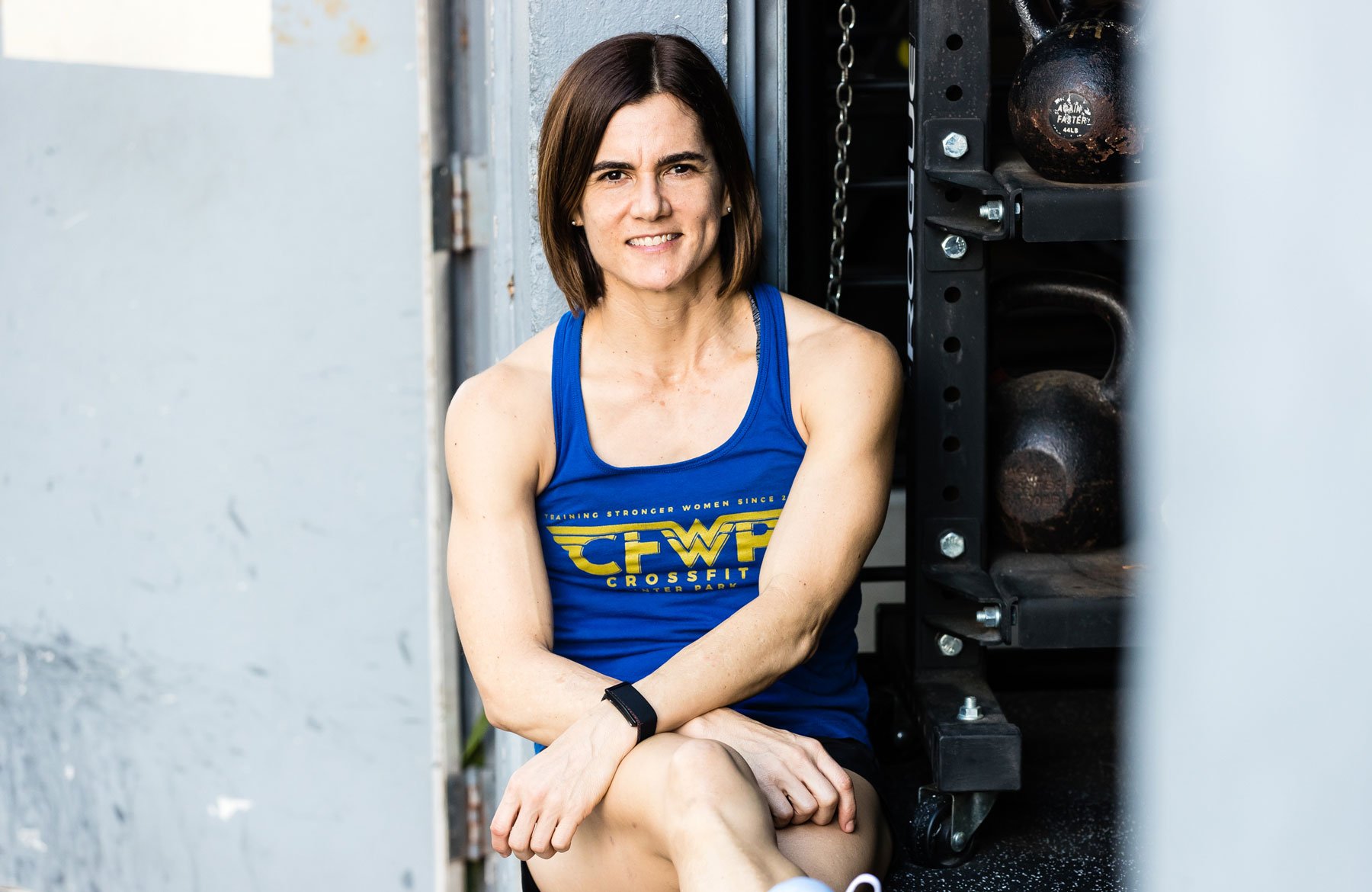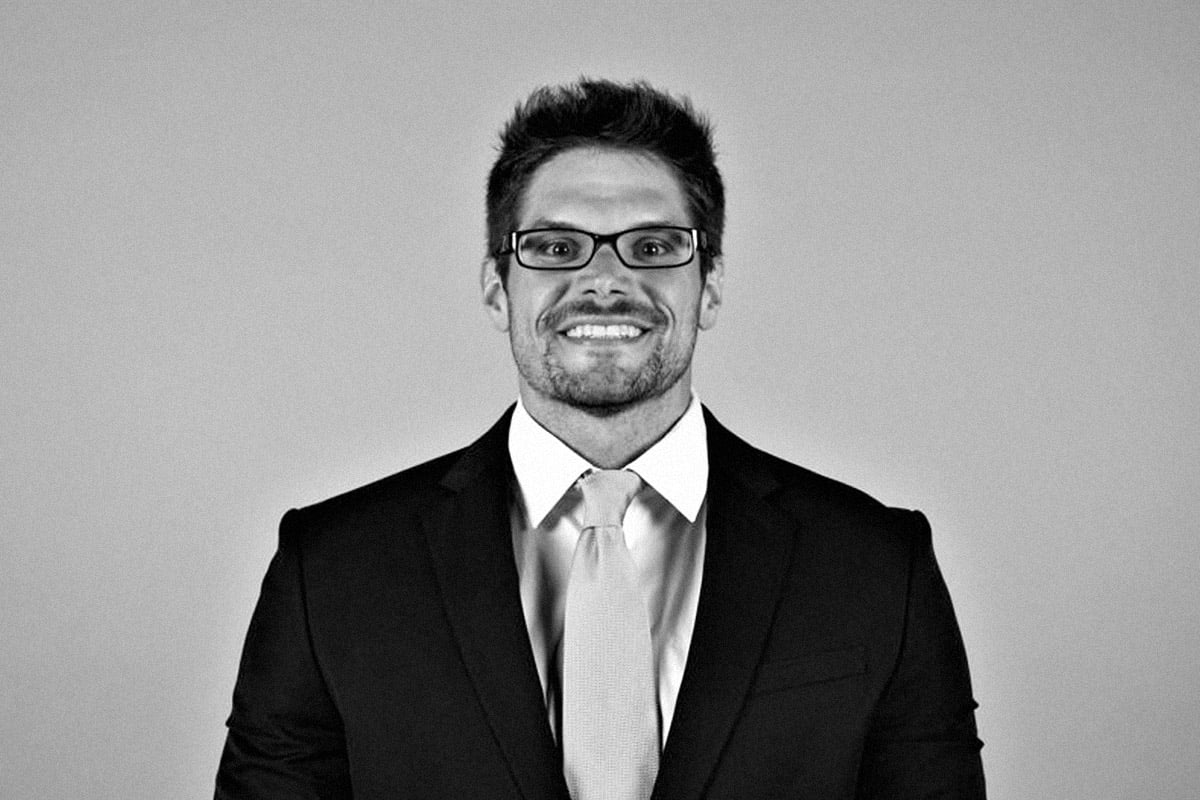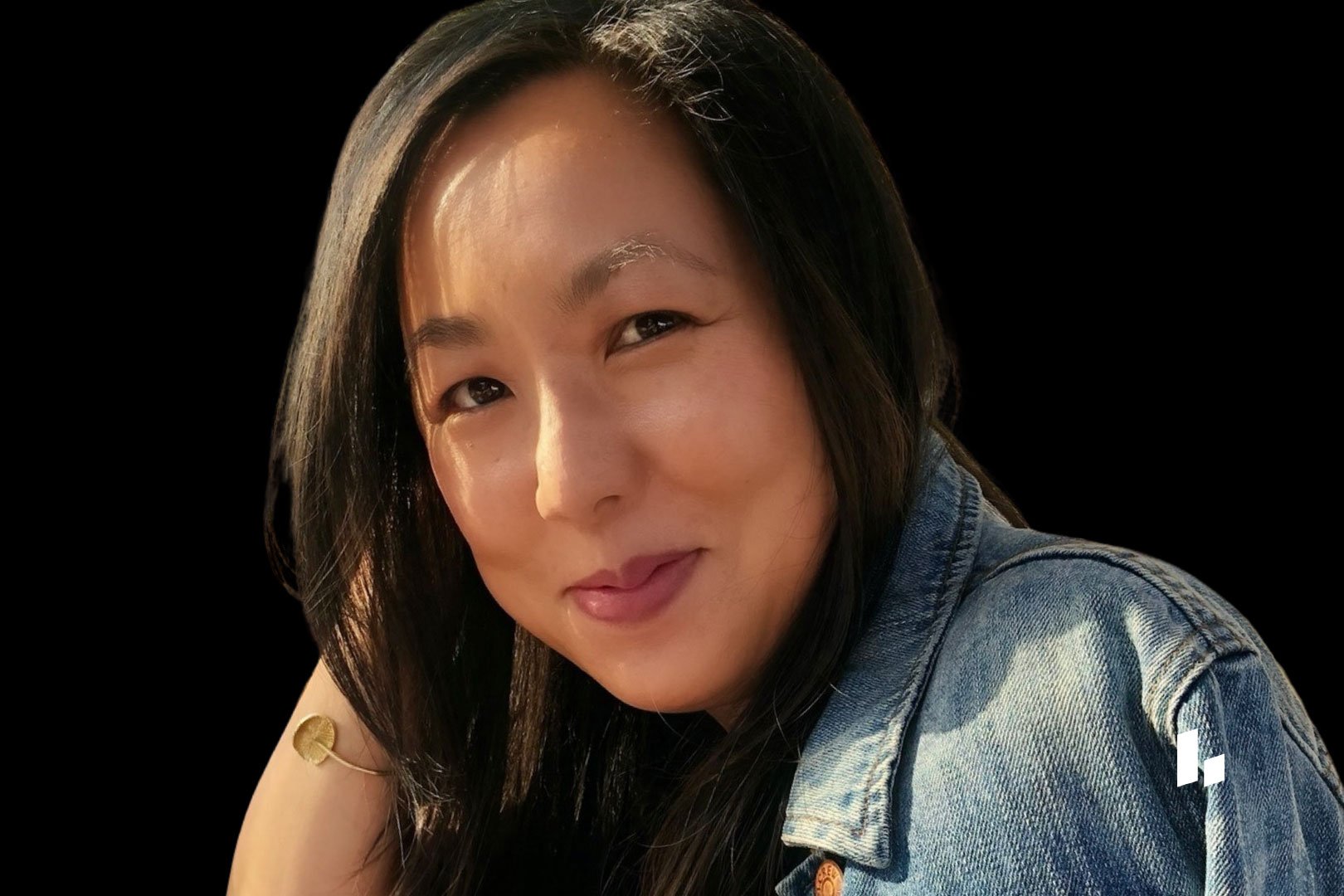Samantha Schultz has had a big couple of years—personally and professionally. The seven-time National Champion and 2019 Pan American Games Silver medalist was the sole U.S. female to qualify for the modern pentathlon at the Tokyo Olympics in 2021. (The modern pentathlon is a five-sport competition: freestyle swimming, épée fencing, equestrian show jumping, running, and shooting.) Sammy was recruited and chosen as a member of the Army’s World Class Athlete Program. As a Sergeant in the Army, Sammy was on active duty from 2017 to 2021 while training and competing. Today, she serves as part of the Colorado National Guard.
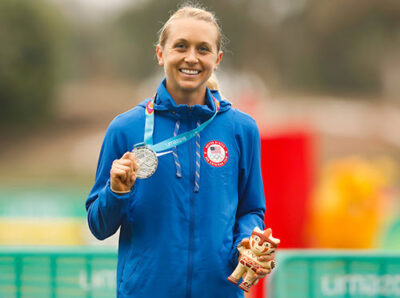 After a successful showing at the Olympics, Sammy retired from her sport at age 30. Looking toward the future, she’s focused on caring for her health after being diagnosed with polycystic ovary syndrome (PCOS) and an eating disorder. As she looks toward recovery, she talks about how using Levels has helped her during her Olympic training and now as she adjusts her diet and exercise habits to care for her health.
After a successful showing at the Olympics, Sammy retired from her sport at age 30. Looking toward the future, she’s focused on caring for her health after being diagnosed with polycystic ovary syndrome (PCOS) and an eating disorder. As she looks toward recovery, she talks about how using Levels has helped her during her Olympic training and now as she adjusts her diet and exercise habits to care for her health.
What made you want to wear a CGM on your arm?
I started wearing a CGM in 2021 before the Tokyo Olympics. I wanted to see where my blood sugar was during and between workouts. In modern pentathlon, there is a lot of training throughout the day. I may have fencing for two to three hours in a competition, so keeping my energy level up without my blood sugar crashing is vital. The problem was that I had been struggling with my gut health and feeling low energy.
I wanted to track things with a CGM to see if that would show me that my body needed more fuel—or a smarter way to fuel. I got so used to pushing through things and not listening to my body, but when I could scan my sensor and track things through the Levels app, it was instant data that showed me what was really going on in my body.
Learn more:
Did you learn anything about how your blood sugar correlated to how you felt during training?
After wearing the CGM, I noticed I’d hit a low after eating certain breakfast foods. About a couple hours before my first workout, I’d eat low-calorie bread, scrambled eggs with fruit, or oatmeal with hardboiled eggs and fruit. But then I’d hit a slump and feel like crap right before my workout, which led to a lack of motivation. No one enjoys working out when they feel in a fog or lethargic.
By monitoring my blood sugar, I learned that a blood sugar crash caused those feelings—it wasn’t just me lacking motivation. Ultimately, I didn’t give my body the right fuel for my workouts. So, I had to shift my eating to level that out. Adding nuts to my oatmeal or avocado to my toast in place of some of the fruit provided fat that seemed to help with glucose spikes and crashes.
Due to a high training load, it was tough to eat much throughout the day, so when I did have food, I’d typically eat a larger meal and have a spike and crash. So, I played around with smaller main meals and more snacks, which seemed to help keep my glucose more level throughout the day.
During fencing practices (the CGM wasn’t allowed in competition), I could use the sensor to track how often blood sugar drops or spikes may occur depending on what I was or was not eating. Once my blood sugar dropped, I noticed decreased reaction times and ability to think in some bouts. Staying ahead of my blood sugar drops or trying to predict how often I needed a small snack helped to keep me sharper and think more clearly.
As a multi-sport athlete, I was working on many things, and I wish I could have had more time to work with the CGM and Levels to find better ways to fuel myself during training and competitions.
 How was the Olympics?
How was the Olympics?
It was an amazing experience, and I am proud of my performance. Four of five of my events went really well. Fencing has always been an event that I struggle with. But that’s the challenge of the sport: Everything has to come together on one day. Training conditions were not ideal because of COVID and the year we were postponed, along with all of that uncertainty. Given everything that went on, I did the best I could and am happy that I still had the opportunity to compete in Tokyo and represent my country!
You’ve had some health challenges recently. Can you tell us more about those?
After the Olympics, I was diagnosed with an eating disorder. I’m sure it was there before that time—my diet had become solely focused on how healthy I could eat—but I hid it well and was never diagnosed. I’m sure that I struggled to even eat enough regularly due to many body image issues, performance standards I placed on myself, perfectionism, and stress. Right now, I’m seeking care from a therapist and dietitian, and soon, group therapy.
In addition to my eating disorder diagnosis last year, I also learned that I have polycystic ovary syndrome (PCOS). I hadn’t had a period for seven years. Growing up, you hear, ‘oh, it’s normal’ not to have a period when you’re a woman in sport. Even my blood work would come back okay with no red flags. Now, I realize that it’s not normal.
Getting a diagnosis of PCOS wasn’t easy because, as an athlete, I didn’t check all the boxes for risk factors for the condition. My ob-gyn also told me it was normal that I didn’t get a period. But even after being off hormonal birth control for years and cutting back on exercise, my period still didn’t return. After going to a fertility specialist and getting an ultrasound and blood test, I discovered I had PCOS.
My doctors put me on metformin. Three weeks later, I got my period, and now my cycle has been relatively consistent. That I responded so well to the medication makes sense to me. My grandma struggled with blood sugar issues, and while I’ve never been diagnosed with metabolic dysfunction, I think all of my training and gut issues caused my body to become dysregulated and not function properly.
How did PCOS treatment affect your blood sugar control?
After being on metformin, I notice I have fewer spikes and generally more stable glucose. My blood sugar is also a lot lower at night on the medication. Of course, the other variable is that I’m not training so much. Being in overdrive training for the Olympics was always putting me in a fight or flight mode, so my blood sugar always ran a lot higher. The previous spikes and crashes were more significant. That has started to even out.
 How does following your blood sugar impact your recovery from your eating disorder?
How does following your blood sugar impact your recovery from your eating disorder?
Now that I’m not exercising quite as hard, I can play around more with my diet than when I was training full-time and nervous about switching things up. Much of my own experimentation comes from an attempt to fit more carbohydrates and variety into my diet, whereas I had been trying to avoid carbs and certain foods with my eating disorder.
I’ll look at my food combinations and portions and how those impact my blood glucose. That might be eating corn tortilla chips, sweet potatoes, or rice and then seeing what happens. Ultimately, my goal is to adjust my diet to keep my energy up and not have tired spells after lunch or an upset stomach because I ate something that caused a crash. Part of my recovery is trying new foods, and it’s been fun to see how things affect me.
What are your plans for your future?
I retired from sports last year after the Olympics. I teach Pilates and am a personal trainer teaching strength-training classes at a few studios, gyms, and local clubs in Colorado Springs and online.
Looking forward, I want to start a family and focus on my relationships—all the things that went to the back burner when competing and traveling. The sport is amazing, but at some point, you have to take care of your health. That’s been the most significant piece of work in my eating disorder recovery. Another goal is to better my relationship with food and make food fun for me again.
What advice would you have for other athletes trying to care for themselves while performing at the top of their sport?
As a younger athlete, I wish I had asked more questions about my health. I encourage others to be an advocate for their health. If something physically doesn’t feel right—you get it checked out. So many times, I put my head down and pushed through the pain. We need to learn the difference between sucking it up in the moment versus when something really does hurt, and you need to figure out what your body is telling you. It’s something I wish I had done, and it’s the same advice I’d give others. I also would encourage others not to compare themselves to others around them. The quote: “Comparison is the thief of joy,” by Theodore Roosevelt, is so true and resonates with me as I work through a transition in my life. We get caught up in seeing what others are doing around us or how they look when we need to focus on our goals and how we feel instead of what social media or society tells us we should be.
